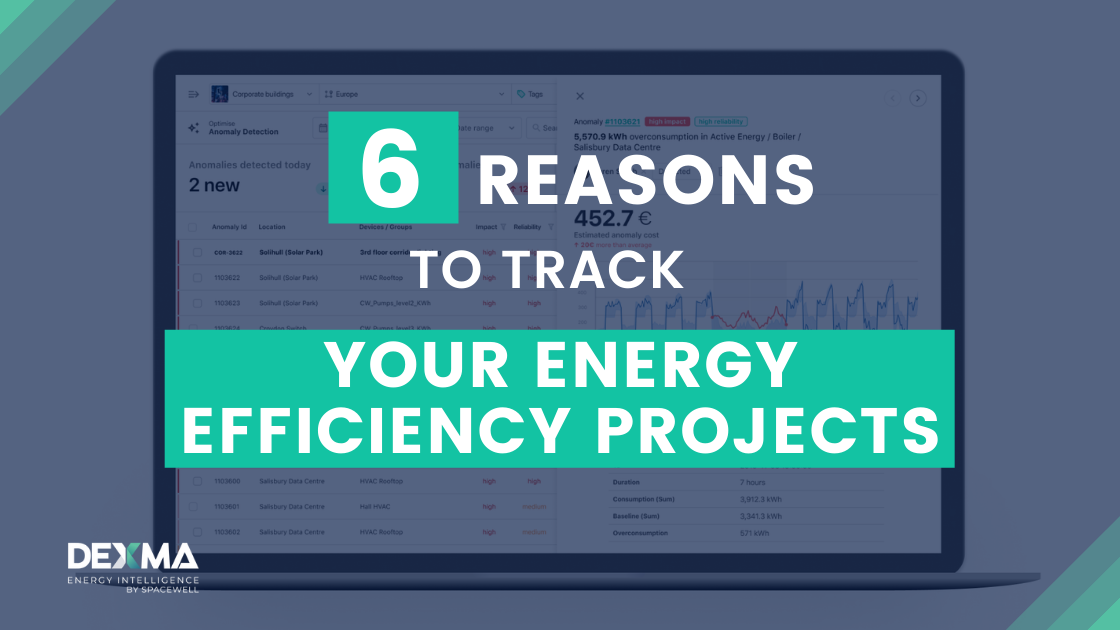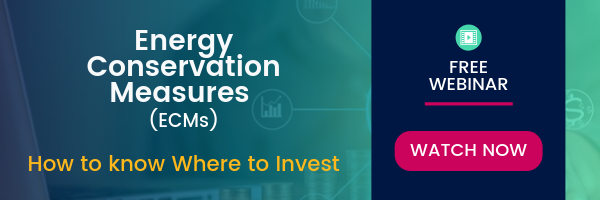In this article, you will read a story that you may be familiar with if you work as a “Head of Maintenance and Energy Management Department”, or similar.
Below, you will find the arguments you need to explain the importance of continuous tracking of your energy efficiency projects.
You have been invited to an important meeting as head of energy, where the company’s CEO and CFO have set a target to reduce the company’s cost items.
Amongst all the items, energy is one of the most significant. So, it is clear that you must improve the level of energy efficiency and lower the energy consumption of the facilities in order to meet the targets that have been set.
You know that in this way you will be able to reduce the part of the costs your department is responsible for, as well as contributing to other sustainability objectives such as the reduction of CO₂ emissions.
So, the first thing you do is carry out an energy audit, on which you will base your energy efficiency project.
In the project, you will include information such as:
- The data from the energy audit
- Which buildings and facilities you need to take action on
- A list of actions to be taken to start saving energy and costs
- Targets to be achieved with these measures within a set time frame
- What investment these actions will entail
- What is the expected ROI of the project?
- Etc
Directors review it and give the go-ahead for the project to start as soon as possible. So, you and your team get down to work and get the project underway.
But an energy efficiency project is not just a matter of launching it, leaving it running and waiting for results at the end of the deadline. From start to finish, you need to monitor the project, and here are 6 reasons why this part of the management job is essential.
6 Reasons Why Tracking Your Energy Efficiency Project is Key
Although some of the reasons below may seem obvious to you, many professionals do not take them into account during the project. As a result, they fail to achieve their goals.
So why is it so important to regularly track your energy efficiency projects? Mainly because with the information you will obtain during energy monitoring, you will be able to:
1. Knowing the real energy savings at different times of the project
Imagine that in your planning you have established a monthly review of the company’s energy consumption by building or installation. To carry out this task of measuring and verifying the savings obtained, one of the most widely used protocols among energy professionals is the IPMVP protocol.
This will allow you to really check how much you are saving and whether you are achieving the targets set according to the KPIs set.
Moreover, checking the real savings periodically will allow you to improve estimates and future savings targets, as well as to redefine the KPIs used so far, if necessary.
2. Quickly detect and resolve any deviations from expectations
Another benefit of carrying out savings measurement and verification tasks periodically during the project is to detect deviations from the forecast. So you and your team are able to adapt the planned actions to the actual needs, solving any deviations in time and avoiding money loss.
In addition, during the measurement and verification tasks, new savings opportunities are often detected where to apply some of the ECMs (Energy Saving and Efficiency Measures) that were already in the project.
Extra tip: if your project has the characteristic of being flexible and being able to modify the established ECMs, remember that using the Energy Saving and Efficiency Pyramid will help you to decide where to start.
3. Know the status of the Return on Investment (ROI) of the Energy Efficiency project
Tracking during the energy efficiency project will allow you to know the status of the ROI at all times. That will let you know if the investment in energy efficiency that has been carried out is obtaining the expected results with respect to the agreed ROI, such as the reduction of kWh consumed, the reduction of final production costs, the reduction in CO₂ emissions, etc.
If it’s not the case, and if it is well tracked, you will have the opportunity to make decisions to redirect the project.
4. Check whether you are efficient while maintaining users comfort and facility performance
When actions are taken to improve the energy efficiency of a building or facility, we must bear in mind that the latter must not lose users comfort, but on the contrary, maintain or improve it.
During the monitoring of the project, you will be able to check if the comfort is maintained after the ECMs have been carried out.
For example, imagine that in your project one of the measures is the renovation of the most energy efficient HVAC system, which also improves indoor air quality. Being able to check the results after the installation of the new equipment will allow you to make the necessary adjustments.
5. Carry out effective and productive internal communication
When the project is underway, it is important to establish a system of continuous communication with the project stakeholders about how the project is going: investors, employees, partners, managers, middle management, those affected, those involved, etc.
To ensure that your internal communications are effective, you should prepare results reports with updated and clear data, schedule regular meetings, and make the most of the tools such as internal chats and emails.
This type of communication will help you to show the status of the ROI, as well as speed up decision-making when making adjustments during the project.
6. Gain synergies with other projects and departments in the company
Sharing the experience of the project with other teams will help you to develop other similar projects. In each project, you learn new things that enrich the following projects or those being carried out in parallel. And if this information arrives in real time, the more efficient will be the benefit you will obtain between the different departments.
Conclusion: The greatest benefit of good tracking of your energy efficiency project is that you will be able to anticipate bad results and future problems by solving them as early as possible.
And remember: to be able to carry out the monitoring during the implementation of the project, it is essential that you have tools that make your job easier.
In this case, having an advanced Energy Management Solution will save you time and improve the productivity of your team, in addition to obtaining more accurate information, as they have tools with which you can perform all of the above tasks more productively and reliably.
What Applications of your Energy Management Solution to use during the Monitoring of your Project?
Each energy management solution will offer different features, although many will be similar. But what are the ideal applications and tools that you should use to monitor your energy efficiency project?
Here is a short list, which you can use as a checklist to see if your EMS has tools that allow you to:
1. Calculate indicators, Ratios, ENPIs… Calculating the energy indicators on which your project will be based will be essential to be able to monitor and check that the energy efficiency objectives are achieved.
You already know that the ENPIs must be calculated specifically for each project and that with them you will be able to create reports with the data of these ratios, on-demand (whenever you want and need them) or based on a location.
2. Perform Measurement and Verification of savings with IPMVP protocol. This protocol proposes 4 measurement and verification options to apply to each of the energy improvements that you have established in your project.
Having a specific IPMVP module in your Management Solution to track per project or per energy saving action will save a lot of time.
3. Calculate your energy baseline easily. Calculating the baseline of your installations will be the initial information on which you will base your planning. And as you monitor the project you will have to adjust it, so calculating it becomes a little more complicated.
Adjusting and calculating a baseline usually takes a few days/weeks using simple tools such as Excel. So if you have a tool that speeds up this process, it will be ideal.
4. Create advanced and customised reports. This is one of the most important functions you will need to be able to share the data with the other departments, financial director, purchasing manager, and your work team.
A tool that allows you to obtain advanced dashboards and customise them according to the information you need to share, is essential to comply with what we mentioned above “To carry out an effective and productive internal communication”.
5. Obtain predictive energy, consumption models. These tools are based on AI and machine learning technologies that calculate energy performance forecasts for each of your buildings, giving you valuable information with which to make decisions and plan your next ECMs.
6. Calculate consumption according to time slots. With this type of tool, you will be able to detect at what times consumption is highest and take savings measures that are applicable in the most appropriate time slots according to the activity of your facilities and their needs.
And now comes the best part, there are such advanced energy management solutions that have these tools and many others, as it is the case of the DEXMA Platform.
How about getting to know it better from the inside? Enter our demo or contact one of our energy software experts.





